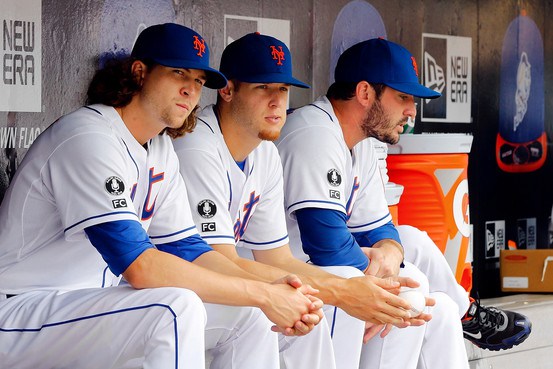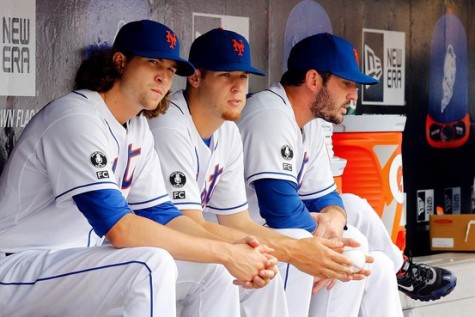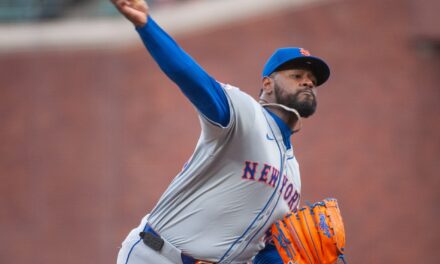
The NFL has recently been praised for their efforts to ensure the long term health and well-being of their players by instituting stringent new protocol on concussions. I remember reading one time that for most players who participate in an NFL game it’s the equivalent of one of us being in like four or five car accidents. I think the NFL is doing the right thing and it makes you wonder whether down the road there will be more and more restrictions because honestly, it probably isn’t enough. I don’t want my kids playing organized football, and I don’t really want my kids to pitch either, at least not until they’re older.
Last year around this time I penned an article based on a bunch of quotes that Dr. James Andrews put out clarifying some things and reaffirming others. You can read it here. The gist of it amounted to the importance of recovery time while limiting max effort and fatigue.
Dr. Andrews and many recent theorists speculate that it isn’t the max effort or the torque per se, but max effort and high-stress torque while already fatigued — which is interesting in light of Ken Davidoff’s piece in the Post calling into question how many 110+ pitch games Wheeler was allowed to pitch last year as a 24 year old.
So here we are a year later and it doesn’t feel like the UCL tear epidemic has abated with Yu Darvish and now our very own Zack Wheeler and Josh Edgin headed for the ligament repair table. It seems like every year every team will have a pitcher or two go down to Tommy John surgery.
Since 2005 there have been 524 Tommy John Surgeries in MLB and MiLB with 194 of them at the Major League level. The Mets are tied for third worst during that stretch with 24 TJ surgeries (12 of them at the Major League level). The only teams with a higher incidence than the Mets are Rangers with 28 and the Braves with 30. You’d think the Mets might have been prudent enough to invest in prevention, maybe a top notch training staff, maybe not insist that the players pay their own gym memberships … I don’t know. To draft all this pitching only to see so much of it go under the knife, it’s like buying a brand new Mercedes AMG and parking it overnight on 34th Ave. and 127th Street in Willets Point … with the keys in the ignition. It makes no sense, especially for a team like the Mets whose foundation appears to be this premise of accumulating a “critical mass” of pitching.
The Giants, Brewers, the Mariners, the Astros, and the White Sox comprise the 5 healthiest teams when it comes to avoiding Tommy John surgeries. Between them they have only had 22 major league TJ surgeries over the same 10 year span, the Mets alone have had more than half that number. What is it about these teams that makes them healthier? Many of them rely on a good number of power pitchers in their systems so it isn’t that. One curious development is that a number of these teams (the Astros in particular) rely on piggybacking their minor league rotations.
For those of you who are unfamiliar with this practice, it amounts to using 8 pitchers in 4 rotating tandems. Each of four “starters” start a game and go for around 75 pitches while the other 4 will relieve them going 50 or 60 pitches, then they flip-flop with the pitchers who were relieving starting on their next scheduled game. Many teams use this system in the low minors as a way for lots of young pitchers to get lots of innings (in fact I believe they’ve been using this system in Savannah) but we haven’t seen anything like this at the major league level, except for The Rockies. Colorado has been employing a modified piggyback system since 2013 but Colorado may be an exception because they simply didn’t have a whole lot of pitchers available who could be relied on to go more than a couple of times through a lineup, while the thin air of the Rockies also presented with fatigue concerns. Regardless, the Rockies have been pretty good over that same 10 year span with only 5 TJ surgeries at the major league level since 2005.
The Mets have a lot of pitching. Traditionalists will balk at the idea of 8 starter pitching tandems, they’re barely able to contain themselves over pitchers not throwing complete games every time out. Starters probably wouldn’t be too keen on a change of this sort either because it would limit their opportunities for securing wins. Any of us who partake in the fantasy baseball arts can tell you how we’ve all been staying away from Colorado pitchers over the past couple of years and not just because of the altitude. It would also present with a major shift statistically if it were widely employed with 20 game winners perhaps becoming a thing of the past.
The Mets could very easily employ four flip-flopping tandems by using something like Degrom/Gee, Colon/Montero, Harvey/Matz, and Neise/Syndergaard. There have been several value based sims run that have shown how piggy-back rotations can present with a significant upgrade over the same pitchers in a traditional 5 starter / bullpen format, primarily because starters in general tend to fare better than bullpen arms in these simulations. A system deep in starters like the Mets have would present with an even bigger advantage in this respect. There have also been some projections showing that this sort of format has an overall cost benefit by shrinking the need for bullpen arms substantially.
In the end you have to consider all options, because clearly the current system isn’t working. 524 busted ligaments over a 10 year span are simply too many. MLB needs a paradigm shift when it comes to starting pitchers … one that goes beyond simply limiting minor league innings and pulling a starter after the 100 pitch mark. These guys are so big and so strong and so well conditioned their ligaments can’t keep up with the stress. If football can make major changes in rules and protocol I don’t see why MLB can’t act to preserve the health of so many of it’s young arms.

Another original article from Metsmerized Online!















